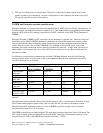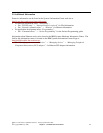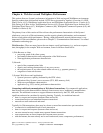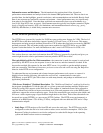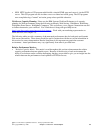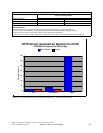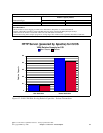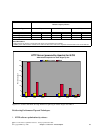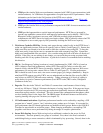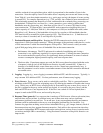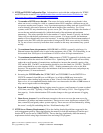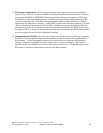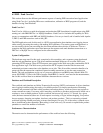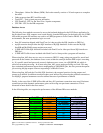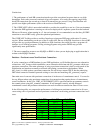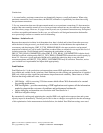
a. V5R4 provides similar Web server performance compared with V5R3 for most transactions (with
similar hardware). In V5R4 there are opportunities to exploit improved CGI performance. More
information can be found in the FAQ section of the HTTP server website
http://www.ibm.com/servers/eserver/iseries/software/http/services/faq.html
under “How can I
improve the performance of my CGI program?”
b. V5R3 provided similar Web server performance compared with V5R2 for most transactions (with
similar hardware).
c. V5R2 provided opportunities to exploit improved performance. HTTP Server (powered by
Apache) was updated to current levels with improved performance and scalability. FRCA (Fast
Response Caching Accelerator) was new with V5R2 and provided a high-performance
compliment to the HTTP Server for highly-used static content. FRCA generally reduces the CPU
consumption to serve static pages by half, potentially doubling the Web server capacity.
2. Web Server Cache for IFS Files: Serving static pages that are cached locally in the HTTP Server’s
cache can significantly increase Web server capacity (refer to Table 6.3 and Figure 6.3). Ensure that
highly used files are selected to be in the cache to limit the overhead of accessing IFS. To keep the
cache most useful, it may be best not to consume the cache with extremely large files. Ensure that
highly used small/medium files are cached. Also, consider using the LiveLocalCache off directive if
possible. If the files you are caching do not change, you can avoid the processing associated with
checking each file for any updates to the data. A great deal of caution is recommeded before enabling
this directive.
3. FRCA: Fast Response Caching Accelerator is newly implemented for V5R2. FRCA is based on
AFPA (Adaptive Fast Path Architecture), utilizes NFC (Network File Cache) to cache files, and
interacts closely with the HTTP Server (powered by Apache). FRCA greatly improves Web server
performance for serving static content (refer to Table 6.3 and Figure 6.3). For best performance,
FRCA should be used to store static, non-secure content (pages, gifs, images, thumbnails). Keep in
mind that HTTP requests served by FRCA are not authenticated and that the files served by FRCA
need to have an ASCII CCSID and correct authority. Taking advantage of all levels of caching is
really the key for good e-Commerce performance (local HTTP cache, FRCA cache, WebSphere
Commerce cache, etc.).
4. Page size: The data in the Table 6.1 and Table 6.2 assumes that a small amount of data is being
served (say 100 bytes). Table 6.3 illustrates the impact of serving larger files. If the pages are larger,
more bytes are processed, CPU processing per transaction significantly increases, and therefore the
transaction capacity metrics are reduced. This also increases the communication throughput, which
can be a limiting factor for the larger files. The IBM Systems Workload Estimator can be used for
capacity planning with page size variations (see chapter 23).
5. CGI with named activations: Significant performance benefits can be realized by compiling a CGI
program into a "named" versus a "new" activation group, perhaps up to 5x better. It is essential for
good performance that CGI-based applications use named activation groups. Refer to the i5/OS ILE
Concepts for more details on activation groups. When changing architectures, recompiling CGI
programs could boost server performance by taking advantage of compiler optimizations.
6. Secure Web Serving: Secure Web serving involves additional overhead to the server for Web
environments. There are primarily two groups of overhead: First, there is the fixed overhead of
establishing/closing a secure connection, which is dominated by key processing. Second, there is the
IBM i 6.1 Performance Capabilities Reference - January/April/October 2008
© Copyright IBM Corp. 2008 Chapter 6 - Web Server and WebSphere 84



